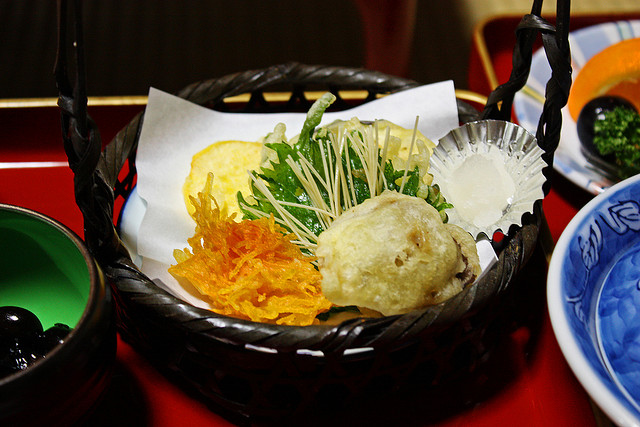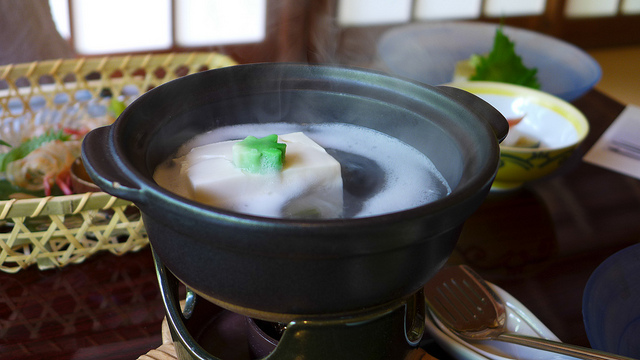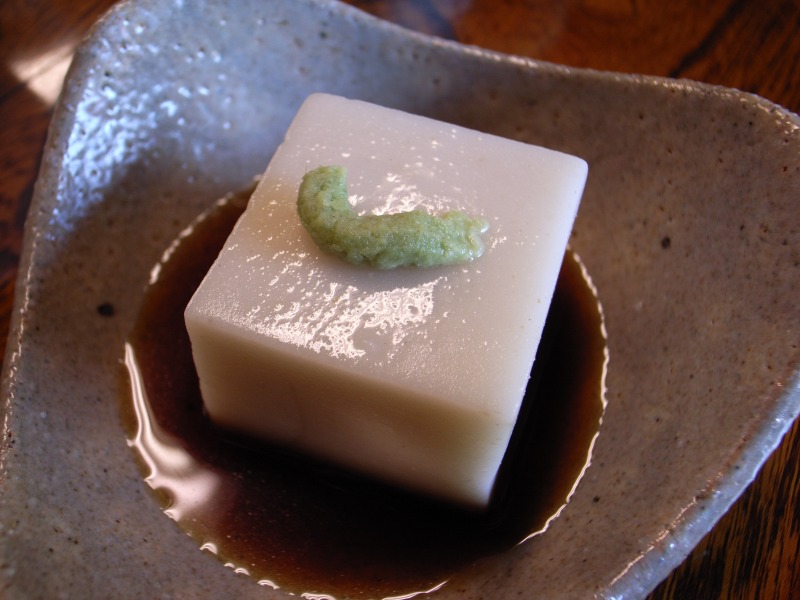Traditionally, Buddhists do not eat meat or take the lives of other creatures. Kobo Daishi was very strict about this, and the temples in Koya-san adhere to the policy. However, the lack of meat and fish does not mean that the food is boring. Instead, vegetarian cooking has been elevated to an art form following the basic guidelines of five preparation styles, five colors, and five flavors. The resulting meals, called shojin ryori, are beautiful, delicious, and healthy.

Shojin Ryori at temple (photo: Andrea Schaffer/flickr)
Along with fresh seasonal vegetables, tofu is an important staple of shojin ryori. One dish developed in Koya-san is Koya tofu, now enjoyed throughout the country. The slightly sweet tofu is dried, then rehydrated before serving, giving it a long shelf life that made it suitable protein throughout the long and cold winters in Mt. Koya.

Koya Tofu at Shoraian (松籟庵) (photo: ericts8/flickr)
A different type of tofu is the rich goma tofu made from white sesame and kudzu starch. It is hearty and flavorful, creating a good balance with many of the more subtle flavors of the vegetables.

Visitors who stay in the temple lodgings can have the chance to try shojin ryori for breakfast and dinner. It is an interesting variation of Japanese cuisine.
